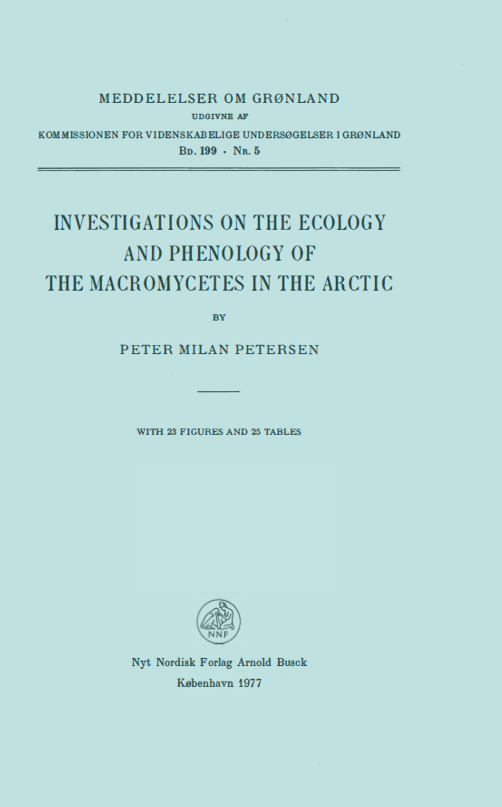Investigations on the Ecology and Phenology of the Macromycetes in the Arctic.
DOI:
https://doi.org/10.7146/mog.v199.147720Resumé
The macromycete flora at Godhavn, Disko, West Greenland (69°14.'N, 53°31'W) has been studied over a three year period, 1970-72. 170 permanent quadrates of 1 square meter each, distributed over 16 sites, were inspected four times a month throughout the growing season. The number of fruit bodies present, as well as the number produced since the last inspection, was recorded. On the basis of these data, the phenology of the macromycete flora in the area is described, and the differences in this respect between the three years are stated. In Godhavn, the fungus season may be divided into a vernal, an aestival and a seasonal aspect; the peak of the season occurred in the first half of August. During the growing season, several variable environmental factors have been measured (precipitation, solar radiation, soil moisture content, soil temperature, and the phenology of the deciduous mycorrhiza associates). An attempt has been made to correlate the fructification of the macromycetes with these factors. There was a high degree of accordance between fructification and solar irradiance as well as soil temperature. It is demonstrated that the soil temperature, as expressed by the daily temperature sum, is positively correlated with the daily solar irradiance. It seems evident that low soil temperatures may delay the growth and development of the macromycete mycelia so much that there is insufficient
time left for fructification before the definitive decrease of the soil temperature in the autumn. - Locally, the brevity of the frost free period, as well as a low soil water content may have been limiting in some of the years. A comparison is made between the macromycete flora in the Arctic and in the temperate forest zone, mainly on the basis of the present investigation and the paper
of LANGE (1948a} on the Agarics of Maglemose (in Denmark). It is stated that in the Arctic, the number of species is lower, the individual species of a more sporadic occurrence, and the ratio of litter decomposers to mycorrhiza forming species lower than in the temperate forest zone. The causes of these differences are discussed.

Downloads
Publiceret
Citation/Eksport
Nummer
Sektion
Licens
Coypyright by the authors and the Commision for Scientific Research in Greenland. No parts of the publications may be reproduced without the consent of the copyright holders.

